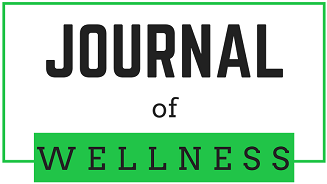
Funder
The authors received no specific funding for this work.
Conflict of Interest
The authors have no conflicts of interest to declare for this work.
Abstract
Introduction: Research has shown that low physician work satisfaction correlates with burnout. Having sufficient time at the patient’s bedside is one element that contributes to work satisfaction. Interruptions, on the other hand, have been implicated as a potential cause of both worker dissatisfaction and clinical error. Better understanding how direct patient care and interruptions affect physician satisfaction may aid in developing future interventions to reduce burnout and improve patient safety.
Methods: We conducted an observational, time-motion study to assess how physicians spend their time and correlated these findings to physician satisfaction. This study was conducted in July 2020 (7/1/20 - 7/15/20) at a 591-bed community hospital. A total of 114 emergency medicine (EM) physicians and hospitalists were eligible for participation. Participants were recruited by email. Two trained medical students categorized and recorded the activities of 13 EM and 8 hospitalist physicians and documented the number of interruptions they experienced. An anonymous survey was also employed to investigate participants’ perceptions about interruptions and how they spend their time. We compared the responses from the subjective survey to the objective data to identify activities that may positively or negatively impact participant satisfaction.
Results: 18.4% of all eligible physicians participated in the study. In summary, our study showed that EM and hospitalist physicians dedicate roughly double the amount of time to indirect patient care (56.3%) compared to direct patient care (25.8%). EM physicians had more than twice the number of interruptions as hospitalists (every 4.4 minutes vs. every 11.3 minutes). From our survey results, we found no statistically significant difference between the perceived and observed proportion of time spent on direct and indirect patient care for EM physicians (p = 0.62 direct; 0.21 indirect) or hospitalists (p = 0.82 direct; 0.69 indirect). However, there was a statistically significant difference between perceived (overestimated) and observed number of interruptions reported by EM physicians (p = 0.02).
Conclusion: The observational data along with the survey results indicate a desire to reduce indirect patient care and increase time at the bedside — suggesting that interventions that target this discrepancy may increase physician work satisfaction and therefore decrease burnout. Additionally, we found that EM physicians far overestimate the actual number of interruptions they experience —however, EM does still engender more than double the interruptions as hospitalists encounter, despite experiencing similar percentages of direct and indirect patient care.
DOI
10.55504/2578-9333.1150
Recommended Citation
Ching, Mariko M.; Lee, Jennifer; and Beecroft, Matthew
(2023)
"A Time-Motion Study of Emergency and Hospitalist Physicians in a Community Hospital Setting,"
Journal of Wellness: Vol. 5
:
Iss.
1
, Article 7.
DOI: https://doi.org/10.55504/2578-9333.1150
Available at:
https://ir.library.louisville.edu/jwellness/vol5/iss1/7
Included in
Management Sciences and Quantitative Methods Commons, Performance Management Commons, Psychiatric and Mental Health Commons
